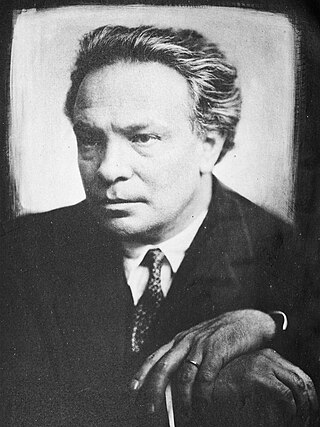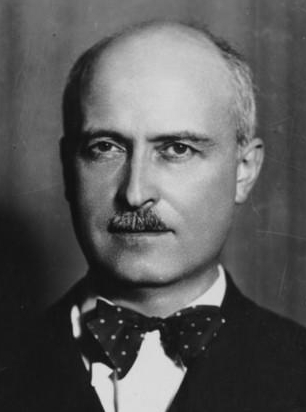Related Research Articles

Gioachino Antonio Rossini was an Italian composer who gained fame for his 39 operas, although he also wrote many songs, some chamber music and piano pieces and some sacred music. He set new standards for both comic and serious opera before retiring from large-scale composition while still in his thirties, at the height of his popularity.

Ottorino Respighi was an Italian composer, violinist, teacher, and musicologist and one of the leading Italian composers of the early 20th century. His compositions range over operas, ballets, orchestral suites, choral songs, chamber music, and transcriptions of Italian compositions of the 16th–18th centuries, but his best known and most performed works are his three orchestral tone poems which brought him international fame: Fountains of Rome (1916), Pines of Rome (1924), and Roman Festivals (1928).
Ballet as a music form progressed from simply a complement to dance, to a concrete compositional form that often had as much value as the dance that went along with it. The dance form, originating in France during the 17th century, began as a theatrical dance. It was not until the 19th century that ballet gained status as a "classical" form. In ballet, the terms 'classical' and 'romantic' are chronologically reversed from musical usage. Thus, the 19th century Classical period in ballet coincided with the 19th century Romantic era in music. Ballet music composers from the 17th–20th centuries, including the likes of Jean-Baptiste Lully, Pyotr Ilyich Tchaikovsky, Igor Stravinsky, and Sergei Prokofiev, were predominantly in France and Russia. Yet with the increased international notoriety seen in Tchaikovsky's and Stravinsky's lifetime, ballet music composition and ballet in general spread across the western world.

Jacques François Antoine Marie Ibert was a French composer of classical music. Having studied music from an early age, he studied at the Paris Conservatoire and won its top prize, the Prix de Rome at his first attempt, despite studies interrupted by his service in World War I.

Mauro Giuseppe Sergio Pantaleo Giuliani was an Italian guitarist, cellist, singer, and composer. He was a leading guitar virtuoso of the early 19th century.

Neoclassicism in music was a twentieth-century trend, particularly current in the interwar period, in which composers sought to return to aesthetic precepts associated with the broadly defined concept of "classicism", namely order, balance, clarity, economy, and emotional restraint. As such, neoclassicism was a reaction against the unrestrained emotionalism and perceived formlessness of late Romanticism, as well as a "call to order" after the experimental ferment of the first two decades of the twentieth century. The neoclassical impulse found its expression in such features as the use of pared-down performing forces, an emphasis on rhythm and on contrapuntal texture, an updated or expanded tonal harmony, and a concentration on absolute music as opposed to Romantic program music.
John Arthur Lanchbery OBE was an English-Australian composer and conductor, famous for his ballet arrangements. He served as the Principal Conductor of the Royal Ballet from 1959 to 1972, Principal Conductor of the Australian Ballet from 1972 to 1977, and Musical Director of the American Ballet Theatre from 1978 to 1980. He continued to conduct regularly for the Royal Ballet until 2001.

Gioachino Rossini's Petite messe solennelle was written in 1863, possibly at the request of Count Alexis Pillet-Will for his wife Louise, to whom it is dedicated. The composer, who had retired from composing operas more than 30 years before, described it as "the last of my péchés de vieillesse".
Marius Constant was a Romanian-born French composer and conductor. Although known in the classical world primarily for his ballet scores, his most widely known music was the iconic guitar theme for The Twilight Zone American television series.
Péchés de vieillesse is a collection of 150 vocal, chamber and solo piano pieces by composer Gioachino Rossini, who was best known for his operas. The pieces are grouped into fourteen unpublished albums under this self-deprecating and ironic title. The ordering of the pieces in the albums does not reflect the sequence or the dates of their composition, which range from 1857 to shortly before Rossini's death in 1868. The title Péchés de vieillesse was given by Rossini only to volumes V to IX but has been applied to all. The collection is salon music, though of a refined order, meant to be performed in the privacy of Rossini's drawing room at Passy. Volumes I, II, III and XI are vocal music to piano accompaniment. Volumes IV, V, VI, VII, VIII, X and XII are music for solo piano. Volume IX is for chamber ensemble or solo piano. Volumes XIII and XIV comprise vocal and non-vocal music.
The Birds is a suite for small orchestra by the Italian composer Ottorino Respighi. Dating from 1928, the work is based on music from the 17th and 18th century and represents an attempt to transcribe birdsong into musical notation, and illustrate bird actions, such as fluttering wings, or scratching feet. The work is in five movements:
La Boutique fantasque, also known as The Magic Toyshop or The Fantastic Toyshop, is a ballet in one act conceived by Léonide Massine, who devised the choreography for a libretto written with the artist André Derain, a pioneer of Fauvism. Derain also designed the décor and costumes for the ballet. Ottorino Respighi wrote the music based on piano pieces by Gioachino Rossini. Its world premiere was at the Alhambra Theatre in London on 5 June 1919, performed by Sergei Diaghilev's Ballets Russes.
Musical tributes or homages from one composer to another can take many forms. Following are examples of the major types of tributes occurring in classical music. A particular work may fit into more than one of these types.
The Violin Concerto in A major, P. 49, is the first violin concerto by the Italian composer Ottorino Respighi, which he abandoned in 1903. In 2009, Salvatore Di Vittorio completed it.
Chamber Orchestra of New York is a professional orchestra founded as Chamber Orchestra of New York - Ottorino Respighi by the Italian composer and conductor Salvatore Di Vittorio. It was established on March 27, 2006, on the 250th anniversary of the birth of Wolfgang Amadeus Mozart, with its debut concert on October 11, 2007 at Carnegie Hall's Zankel Hall as part of the inaugural 2007/2008 Season.
Overture Respighiana is an overture composed by Salvatore Di Vittorio in 2008, as an homage to Ottorino Respighi, one year after completing Respighi's rediscovered first Violin Concerto in A Major.

Roberto Benzi is a French conductor and former child actor.
Mauro Giuliani's "Rossiniane" are a virtuoso variations cycle for the guitar based on themes by Rossini. One of the unique features of these Galant Classical compositions is that they were jointly composed by Giuliani, Paganini, and Rossini himself at Rossini's villa. Mauro Giuliani alone is formally credited with composing the six sets of jointly composed variations for guitar on themes by Rossini, Opp. 119–124. Each set was called "Rossiniana", and collectively they are called "Rossiniane". This was the first known tribute by one composer to another using a title with the ending -ana.

Soirées musicales,, Op. 9, is a suite of five movements by Benjamin Britten, using music composed by Gioachino Rossini. The suite, first performed in 1937, derives its title from Rossini's collection of the same name, dating from the early 1830s, from which Britten drew much of the thematic material.
The Sei pezzi per pianoforte, P 044, is a set of six solo piano pieces written by the Italian composer Ottorino Respighi between 1903 and 1905. These predominantly salonesque pieces are eclectic, drawing influence from different musical styles and composers. The pieces have various musical forms and were composed separately and later published together between 1905 and 1907 in a set under the same title for editorial reasons; Respighi had not conceived them as a suite, and therefore did not intend to have uniformity among the pieces. The set, under Bongiovanni, became his first published work. Five of the six pieces are derived from earlier works by Respighi, and only one of them, the "Canone", has an extant manuscript.